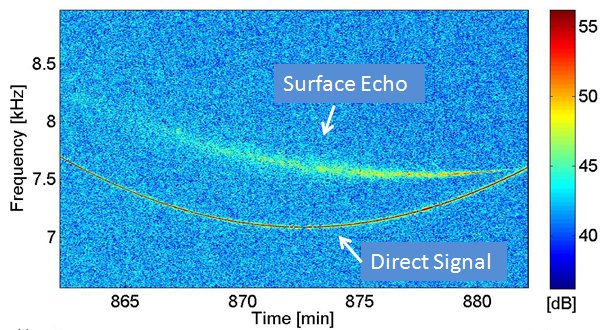Hrefna Marin Gunnarsdottir - Modeling the Martian Surface Using Bistatic Radar at High Incidence Angles
Bistatic radar is a system where the transmitter and receiver are in two separate locations. It has been used since the 1960s to probe planetary surfaces, yielding information on their physical and electrical properties.
In 2005 we conducted the first ever successful uplink planetary bistatic radar observations. The planet Mars was illuminated 76 times for 20 minutes each by an unmodulated 75-cm circularly polarized wave transmitted from the SRI International 46-m antenna in the Stanford foothills. The direct signal and a Martian surface echo, separated by differential Doppler frequency shifts, were received simultaneously by the one-bit receiver on board the Mars Odyssey orbiter. The surface echoes are characterized by both fluctuating amplitude and varying spectral width, which are responses to surface reflectivity and roughness variations along the surface track.
Our analysis of the echo data is based on quasi-specular scattering theory and makes use of high-resolution Mars Orbiter Laser Altimeter topographic maps to model the scattering surface in three dimensions along the specular track of the echo. Assuming a two-scale model incorporating classic scattering models, we infer surface roughness in the form of rms surface slopes. Since the radar is sensitive to slopes on the order of a wavelength in size and larger, the results are important for evaluating landing safety for Mars exploration spacecraft. Most recently the results were incorporated into the landing site selection for the 2008 Phoenix Mars Lander.



